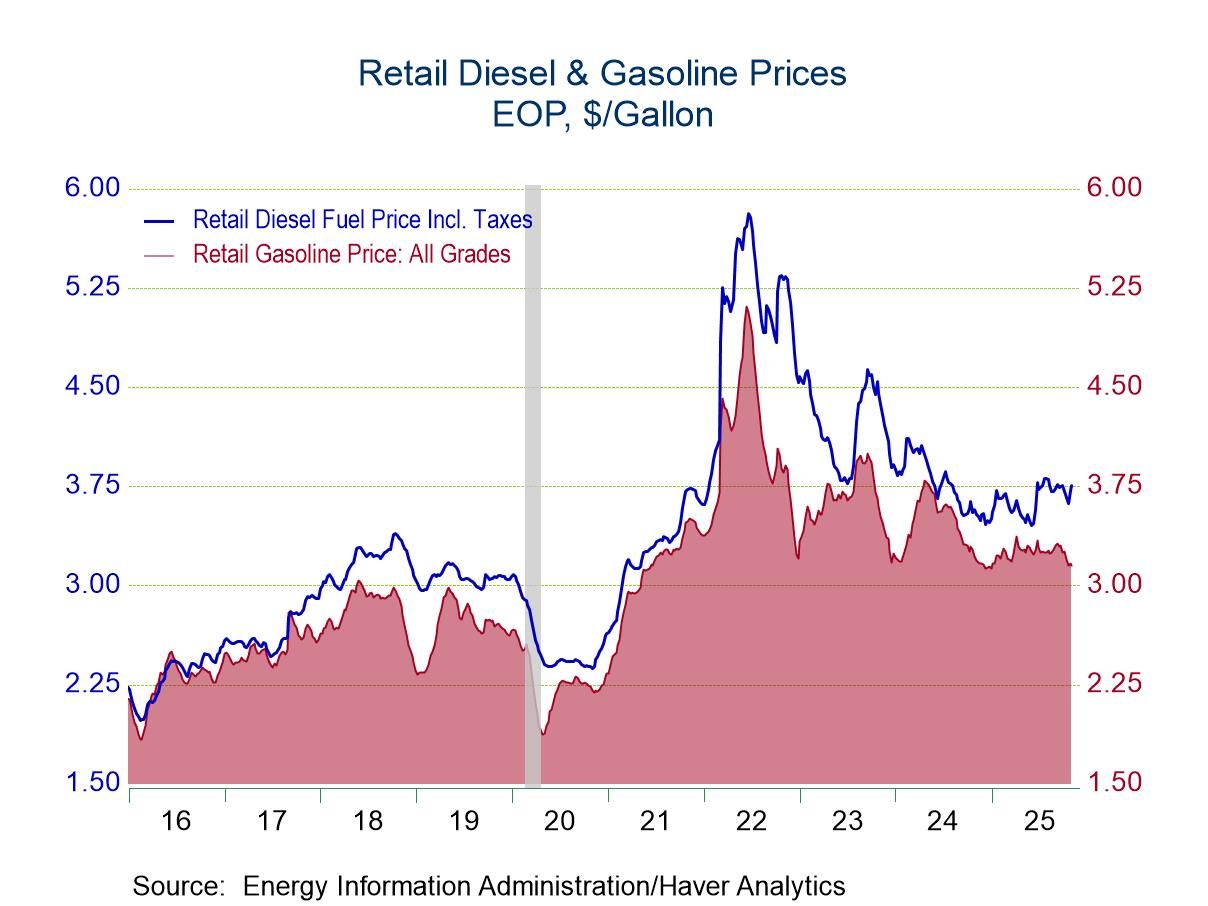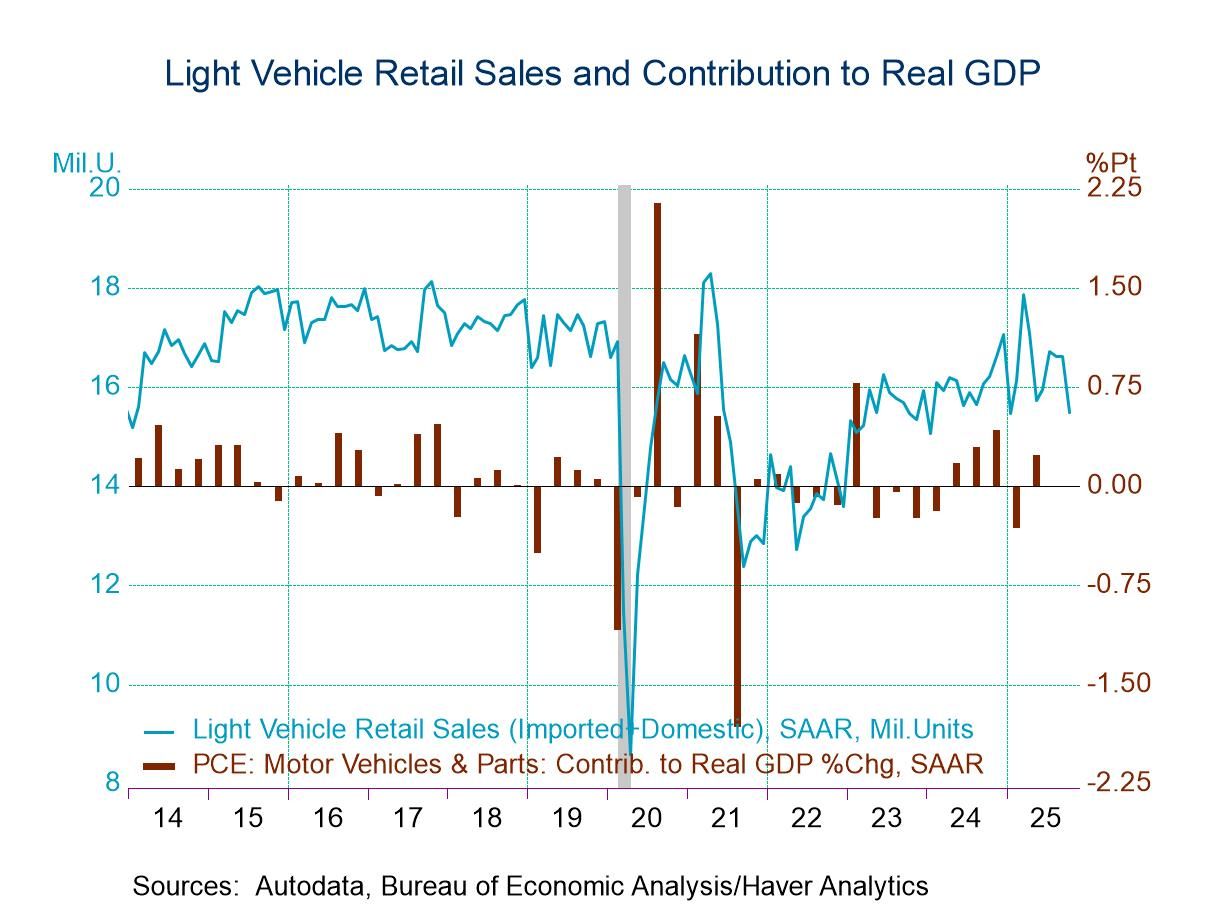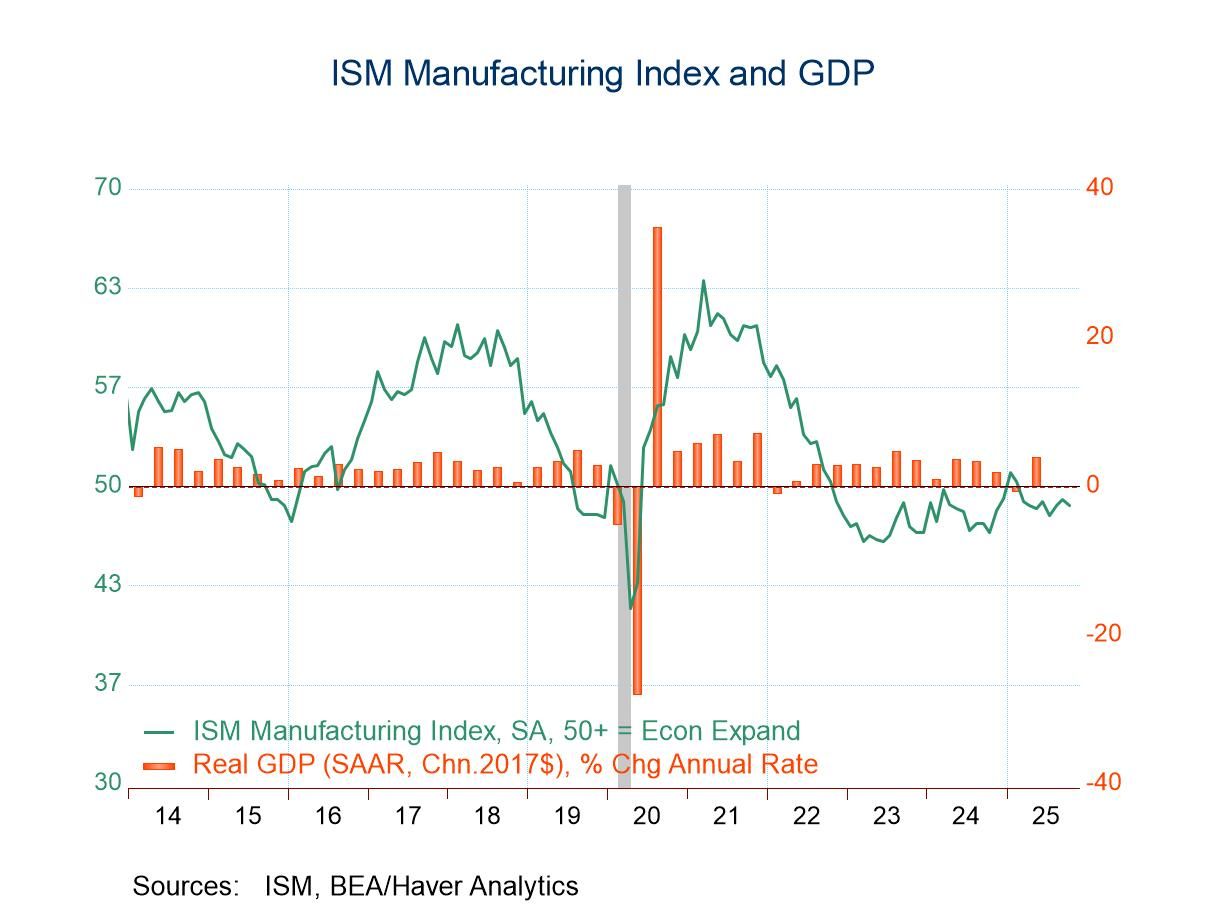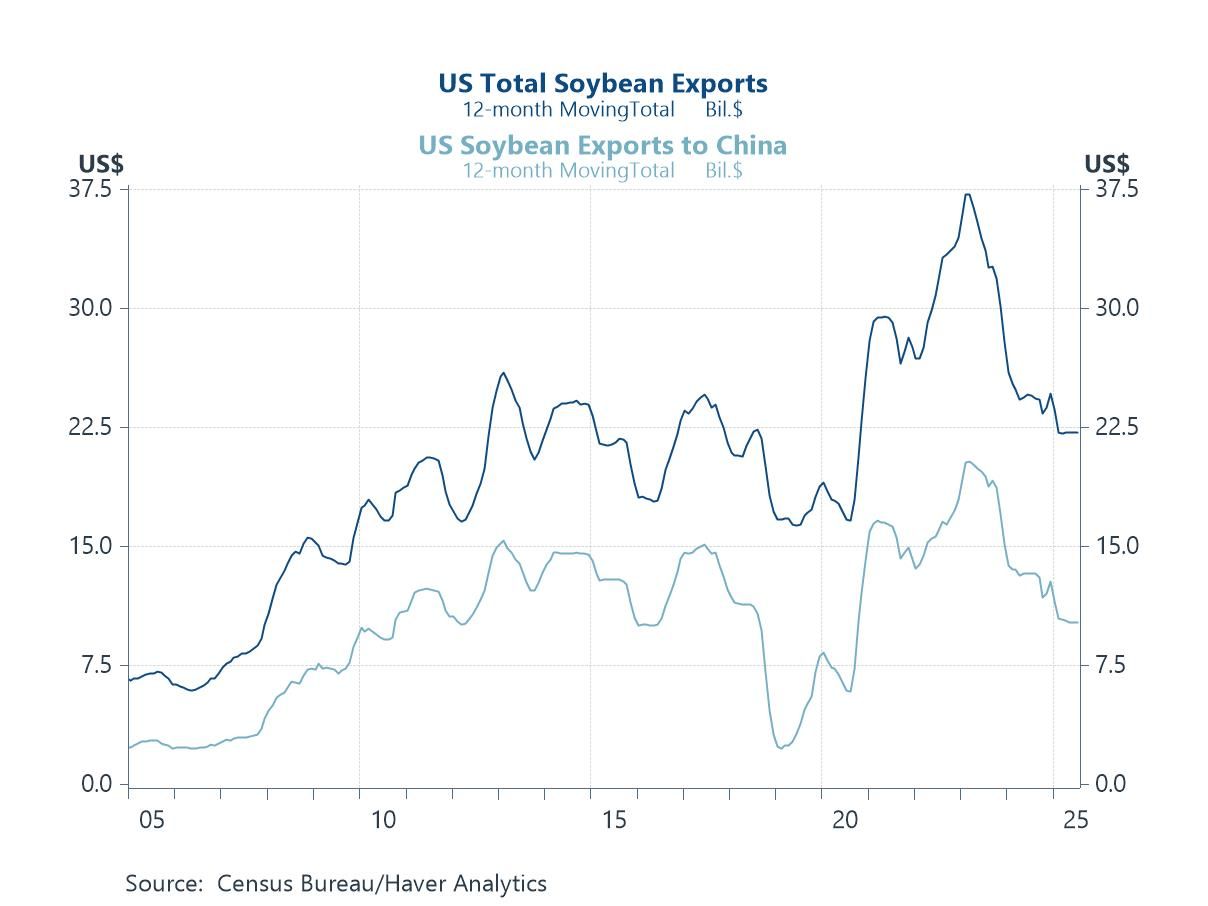French Trade Trends Show Deficit Contraction

French trade trends show slowing year-over-year patterns for both exports and imports of goods excluding military equipment. While both flows are decelerating, it's imports where growth has turned negative. Imports show negative growth rates over 12 months, 6 months and 3 months. Exports are slowing year-over-year; however, in terms of shorter-term trends, exports show growth of 4.3% over 12 months, growth at an annual rate of 5.3% over 6 months, and growth accelerating to an 11.9% annual rate over 3 months. This is an accelerating short-term pattern that defies its longer-term year-over-year slowing trend.
For exports, the three-component flows depicted in the table {for 1) food, beverages & tobacco, 2) Transportation equipment, and 3) Other} all show positive trends. There are accelerations in progress from 12-months to 6-months to 3-months for all of them. From that standpoint, the strengthening of exports within the last year is a durable trend.
For imports, food, beverages & tobacco hint at some acceleration with very similar 6- and 12-month growth rates between 3- and 3½-percent that then accelerate to 9.6% over 3 months. Imports of transportation equipment, however, show waffling as they grow at a 12.4% annual rate over 12 months, slow to a 3.5% annual rate over 6 months, and then accelerate to a 10.4% annual rate over 3 months; that's a 3-month growth rate that's still below the 12-month growth rate and does not count as a tendency to accelerate. For ‘other’ imports, French trade results show declines on all horizons, but without any clear trend. Other import flows decline at a 13.7% annual rate over 12-months, that decline steps up to a -25.6% annual rate over 6 months, then it trims the speed of decline to -5.5% over 3 months. On balance, the ‘other’ category for French imports simply shows ongoing weakness but without a clear trend.
France’s current account in June swings into surplus after logging a deficit in May and rather persistent deficits in previous months. One year ago, imports outgained exports on a growth rate of 35.8% for imports compared to 20.7% for exports. However, over the last 12 months, that worm has turned, and imports are falling at a 9.2% annual rate, while exports have advanced at a 4.3% annual rate. The changes in these growth rates are what underline the swing in the current account from deficit territory into surplus territory. France’s trade balance continues to be in deficit in June. However, the deficit in June is only about 60% the size of the deficit averaged over the last 12 months.

Globally, trade flows have been slowing down. The big international news of the day has been the inflation reports from China that show that China is flirting with deflation. While China will not officially talk about this, it's also true that many western analysts do not think that China is about to slip into a period of sustained deflation. However, with price weakness in China particularly, led by weakness in producer prices, there's potential for some anti-inflationary knock-on effects though commodity prices for the rest of the world economy. That impact is going to be more limited than it was in the past because China has become somewhat less connected to the global economy in the wake of the COVID crisis after the way the Chinese authorities handled it. China is hardly isolated, but it is less plugged into the global economy than it once was as many firms have shifted supply chains out of China to gain control and stability.
Robert Brusca
AuthorMore in Author Profile »Robert A. Brusca is Chief Economist of Fact and Opinion Economics, a consulting firm he founded in Manhattan. He has been an economist on Wall Street for over 25 years. He has visited central banking and large institutional clients in over 30 countries in his career as an economist. Mr. Brusca was a Divisional Research Chief at the Federal Reserve Bank of NY (Chief of the International Financial markets Division), a Fed Watcher at Irving Trust and Chief Economist at Nikko Securities International. He is widely quoted and appears in various media. Mr. Brusca holds an MA and Ph.D. in economics from Michigan State University and a BA in Economics from the University of Michigan. His research pursues his strong interests in non aligned policy economics as well as international economics. FAO Economics’ research targets investors to assist them in making better investment decisions in stocks, bonds and in a variety of international assets. The company does not manage money and has no conflicts in giving economic advice.







 Asia
Asia